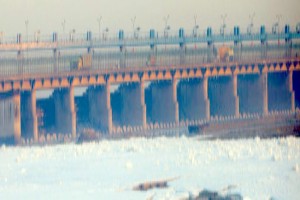
A polluted Yamuna River in Delhi
CPCB raises concern on Pollution and Frothing in River Yamuna
Asks Delhi and other states for effective sewage treatment
New Delhi: In view of the importance of the issues of froth formation and increased ammonia level in river Yamuna, the Central Pollution Control Board today issued reminders to the Delhi Pollution Control Committe (DPCC) and Delhi Jal Board and other concerned authorities to submit action taken report by December 15, 2020.
The Central Pollution Control Board had earlier issued directions to Delhi Jal Board to submit a time-bound action plan to ensure compliance to norms by Sewerage Treatment Plants and that no untreated sewage is discharged to the drains after it noticed an increase in ammonia level and froth formation in Yamuna river.
It had further directed the Delhi Pollution Control Committee (DPCC) to take action against non-complying Common Effluent Treatment Plans(CETPs) and industrial units. Similar directions have also been issued to State Pollution Control Boards of Haryana and Uttar Pradesh.
“The ammonia level and froth formation have increased because of discharge of untreated sewage, non-operation of existing Sewage Treatment Plants, improper functioning of Effluent Treatment Plants(ETPs) installed by the industries and Common Effluent Treatment Plants(CETPs) located on the banks of river Yamuna,” the CPCB, which monitors water quality of River Yamuna and drains discharging into the River, stated today.
It stated that monitoring of 22 drains carried out recently indicated that 14 drains (Sonia Vihar, Najafgarh, Shastri Park, Shahdara, etc.) were found untapped, discharging sewage. “While 5 drains are 100% tapped and no flow at downward of interception observed, 2 drains were found tapped but overflow into river Yamuna was observed. One drain (drain no. 14) has no flow at all. Due to partially/untreated discharge of sewage and industrial effluent containing phosphorus, many times, foaming also is observed,” it noted.
– globalbihari bureau





